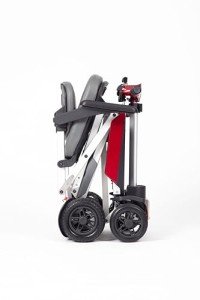Understanding Mobility Aids: Enhancing Independence and Quality of Life
As society continues to age and individuals increasingly look for methods to maintain independence, the need for mobility aids has actually never been more significant. Mobility aids, which encompass a variety of devices created to assist individuals with walking or moving around, play a crucial function in promoting mobility, enhancing safety, and improving general quality of life. click the next website will check out the numerous types of mobility aids, their benefits, considerations for selection, and answer some regularly asked concerns.
Kinds Of Mobility Aids
Numerous mobility aids are available, each designed to deal with particular requirements. The following table summarizes a few of the most typical kinds of mobility aids and their functions.
| Type of Mobility Aid | Description | Best Suited For | Key Features |
|---|---|---|---|
| Walking canes | A portable stick offering assistance and balance. | People who need minimal support. | Light-weight, portable, adjustable height. |
| Walkers | Four-legged frames supplying stability. | Those needing significant support while strolling. | Foldable, some with wheels, added security features. |
| Rollators | Wheeled walkers with a seat for resting. | Individuals requiring mobility with the choice to rest. | Brakes, baskets for personal items, adjustable height. |
| Wheelchairs | Chairs with wheels for people with limited mobility. | Those unable to walk or needing extensive support. | Manual or powered options, adjustable seating. |
| Scooters | Motorized devices for larger ranges. | Individuals with minimal stamina however requiring independence. | Various sizes and designs, often transportable. |
| Crutches | Support devices positioned under the arms or forearms. | Individuals recuperating from lower limb injuries. | Adjustable, lightweight, needs upper body strength. |
| Stairlifts | Mechanical devices for moving in between floorings. | Users facing challenges in multi-level homes. | Adjustable for various staircases, automated. |
Benefits of Mobility Aids
Mobility aids offer a range of advantages that can considerably enhance the lives of people dealing with mobility obstacles. Some notable advantages include:
- Increased Independence: Mobility aids empower individuals to move freely without relying on others for support, consequently enhancing their confidence and self-esteem.
- Improved Safety: Using mobility aids can decrease the danger of falls and injuries, especially for older adults or those with balance issues.
- Improved Quality of Life: By facilitating mobility, people can take part in social activities, participate in occasions, and take pleasure in life more totally, adding to better emotional and mental health.
- Rehabilitation Support: After surgery or injury, mobility aids provide essential assistance and stability, aiding in healing and rehab procedures.
- Ease of access: Many mobility aids are designed to be utilized both inside your home and outdoors, making sure that people can browse various environments with ease.
Aspects to Consider When Choosing Mobility Aids
Choosing the proper mobility help requires careful factor to consider of a number of elements, consisting of:
| Factor | Factors to consider |
|---|---|
| User's Needs | Examine the level of mobility required; consider whether the user requires momentary or long-term support. |
| Physical Limitations | Evaluate the user's strength, balance, and coordination to identify the best kind of aid. |
| Setting | Consider the primary environments where the aid will be utilized, such as home, outdoors, or specific surfaces. |
| Weight and Portability | Make sure that the chosen device is workable concerning transportability and storage, particularly for outside usage. |
| Budget plan | Mobility aids been available in a series of prices; consider insurance coverage and readily available financing alternatives. |
| Adjustability | Select aids that can be changed for height and comfort to accommodate growth or altering requirements. |
Frequently Asked Questions About Mobility Aids
1. How do I know if I require a mobility help?
Lots of factors can signify the requirement for a mobility help, such as difficulty strolling or balancing, tiredness while standing, or a current surgical treatment affecting mobility. Consulting with a health care specialist can supply guidance customized to specific needs.
2. What types of mobility aids are covered by insurance coverage?
Protection varies between insurers, however the majority of offer alternatives for long lasting medical equipment, which usually consists of wheelchairs, walkers, and some kinds of walking sticks. Contact your insurance coverage provider for particular protection information.
3. Can mobility aids be used outdoors?
Yes, numerous modern mobility aids are created for outside usage. Rollators, scooters, and some walkers are equipped with functions for stability and ease of use on numerous terrain.
4. How do I keep my mobility help?
Routine maintenance includes examining for any wear and tear, guaranteeing that parts such as wheels, brakes, and frames are operating correctly, and cleaning up the equipment as needed. Following the manufacturer's guidelines is essential for safety.
5. Exists a danger of ending up being reliant on mobility aids?
While some users might end up being reliant on mobility aids, they are developed to promote independence and mobility. Slowly utilizing a mobility aid can enhance confidence and help keep physical strength and coordination.
Mobility aids are important tools that empower people to overcome physical difficulties, promoting independence and boosting quality of life. By understanding the various kinds of mobility aids available, their benefits, and crucial aspects for factor to consider, families and caregivers can make informed decisions that best fulfill the needs of their liked ones. With the ideal assistance, those with mobility obstacles can lead fulfilling and active lives, totally free to explore the world around them.

